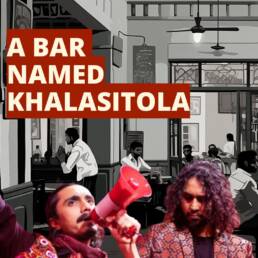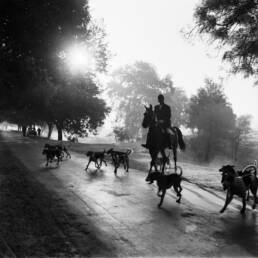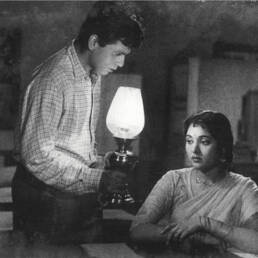Explore the remarkable journey of the Bollywood blockbuster ‘Disco Dancer’ through the eyes of Irfan Khan, assistant director of the film, as he shares an intimate and exclusive account of the movie’s extraordinary odyssey with The Paperclip.
If the Indian box office collection of “Disco Dancer” (calculated in today’s terms) would be in excess of Rs 100 crore, then add another Rs 100 crore just from Russia. In fact, “Disco Dancer” remains the second highest-grossing film ever in Russia.
“Disco Dancer” was released on 17 December 1982 and created history. Two years before that, producer-director B. Subhash struggled to keep his home-fire burning. What changed the fortunes of this man? I can tell this story since I was the film’s Assistant Director.
In fact, I was the only person, besides B. Subhash, who was associated with the film from start to finish. I joined as his apprentice on the first day of shooting of “Taqdeer Ka Badshah.” The film starred Mithun Chakraborty, Amjad Khan, Pran, and Ranjeeta.
However,”Taqdeer Ka Badshah” got delayed beyond the estimated time and caused problems. Senior technicians, like the director, cameraman etc. get paid on a contractual basis, and if a film is delayed, payment is held up. B. Subhash started feeling the crunch.
He had three school-going children and even though he had his own apartment in Juhu and a beat-down Fiat, cash was still a problem. In desperation, he picked up another director’s incomplete project called “Hisaab Kitaab,” starring Navin Nischol and Pran, on the latter’s recommendation.
Ironically, Hisaab Kitaab’s producer too was struggling and would shoot sporadically. The money, thus, came in spurts and created endless angst for Subhash. Now, Subhash often played cards (gambled) with a small group of well-heeled friends in Bandra.
On good days, the winnings would help him out, and on bad days he would end up in debt. Despite these friends helping him out with money sometimes, Subhash realized that if he continued to borrow to run his home, it would make him look bad and, moreover, would work only a few times.
However, if he had a project that he was producing, then the money would not be borrowed but rather seen as invested in the project. Subhash soon started planning a film that he could produce and direct.
Now, Mithun was known to be a great dancer and his films would customarily include a dance number. ‘Taqdeer Ka Badshah’ too had a disco song. Before shooting the song, Subhash went to bookstores and browsed foreign magazines for inspiration. This is when he came across a book simply titled “Disco Dancer.”
The content of the book was about fashion for discos. Subhash fell in love with the cover design, and an idea was born. Meanwhile, Mithun was going through a rough patch, with many of his films failing at the box office.
One day, while we were shooting a part of Taqdeer Ka Badshah’s disco song at Hotel Poonam International, Worli, Mithun went to his room and plonked face down on the bed.
Subhash entered the room to see a forlorn Mithun, whose new film had bombed again. Subhash thought this was a good opportunity to broach his idea and told Mithun he had a good project in mind. Subhash simply uttered the name of the film – “Disco Dancer.”
The name had an electrifying impact on Mithun, who immediately bounced up from the bed and turned excitedly towards him. Subhash narrated his skeletal story idea that was told to him by writer Deepak Balraj.
But Mithun had heard very little beyond the title “Disco Dancer.” He was known for dancing, and this would be apt. He even wondered why no one else had thought of it before. Subhash realized he had to get down to work.
Subhash did not have a complete script or even the money to make the film. All he knew is like all producers, he too would get financiers to back his project. But for that, the project had to materialize. He had to have a cast, a crew, and make a formal newspaper announcement.
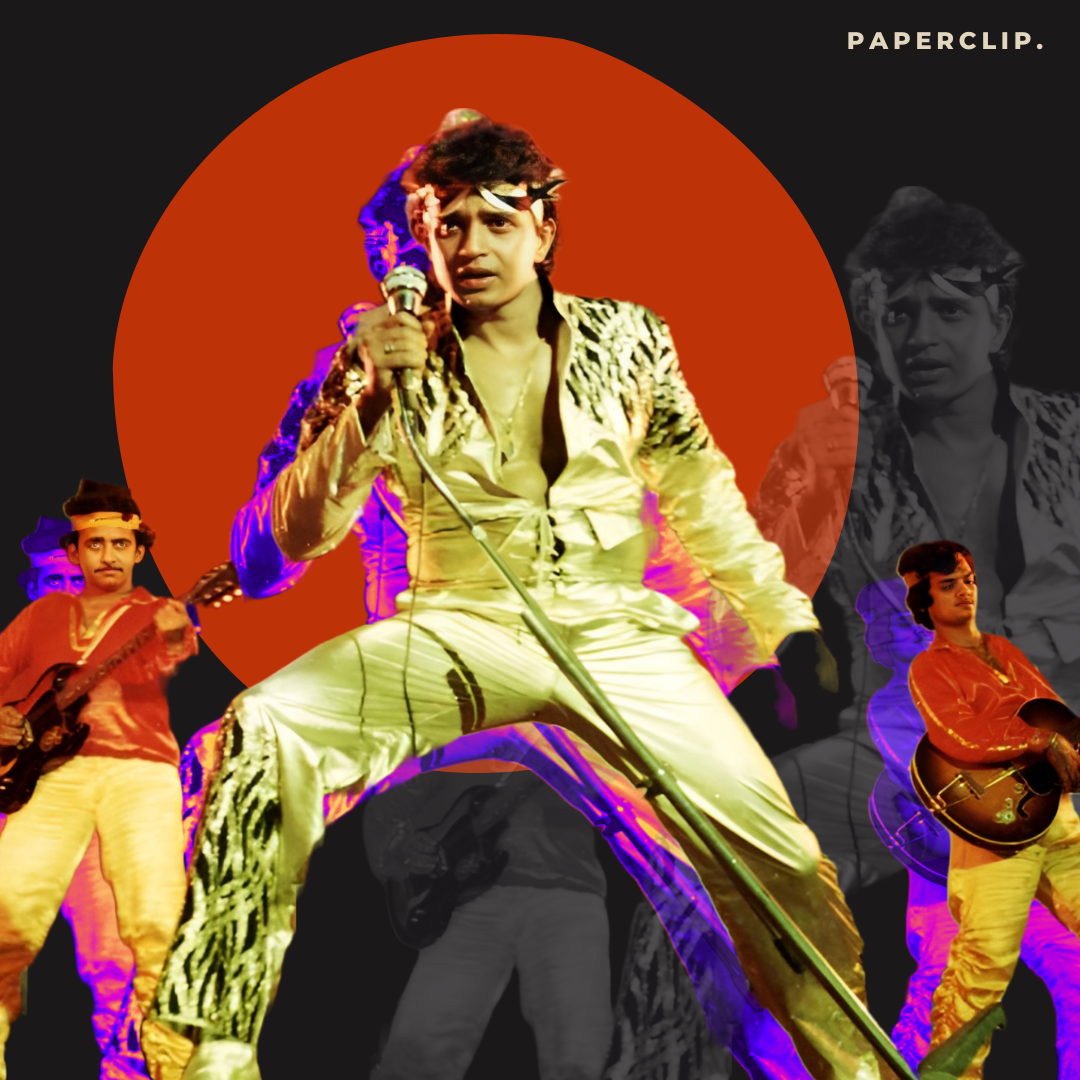
Subhash started putting the pieces together. First, he needed a heroine for the project, preferably a new girl so that he didn’t have to pay a big signing fee. He knew the actor Danny had a girlfriend, Kim, who was looking for a break.
In fact, Danny’s secretary, Madan, was extensively canvassing for her, and Subhash immediately confirmed her. Subhash also had strong ties with writer Dr Rahi Masoom Reza and approached him for his first production venture.
You see, the Mumbai film industry has a unique tradition: whenever a technician turns producer, other crew members support the project at a discount or even for free. Dr. Reza agreed to write the film’s script and introduced his son, Nadeem Khan, to Subhash.
Nadeem, an FTII cinematographer, had just finished “Garm Hawa” for Muzaffar Ali. Subhash not only got a writer but also a cameraman in the same instance. The choice of a music director was super easy:who else but Bappi Lahiri, who was also the music director of “Taqdeer Ka Badshah.”
As for costumes, that problem too got solved. Mithun’s costume designer was ‘Bada Saab’ (Kishore Bajaj). Mithun put in a word for Subash and the costumes for Mithun and Kim were made on credit. Subhash had to next hit the sweet spot with his publicity designs. For this, he had an idea.
“Taqdeer Ka Badshah” had one more day of shooting left to film the disco song. Subhash immediately seized the opportunity for his own project. He got a publicity photographer, Nadeem Khan, and Kim on the sets along with Mithun and took some pictures for the publicity of “Disco Dancer.”
Since it was a disco set, it worked perfectly and the end results looked great. But that was not all, for Subhash had another ace up his sleeve.
Apart from his friends in Bandra, there was another group in Juhu with whom Subhash played cards. One of the players was Mr. Jimmy Nirula, the then GM of HMV Music Company. Subhash took an appointment and landed up at his office on P.M. Road, Flora Fountain, Mumbai.
Subhash narrated the concept and showed Nirula the publicity designs. Nirula instantly loved the project and agreed to buy the music. But there was one catch: money would come only against the delivery of the music tracks.
Subhash seized the opportunity and requested Nirula to give him a full-page ad in the industry newspaper “Screen” (Indian Express Group). Nirula was not sure if he could do that because HMV did this kind of thing only for big, established producers.
Subhash emphasized that the music in his film would be phenomenal. Nirula was convinced and agreed to run the ad, which would also mention the date of the film’s ‘muhurat’ (auspicious commencement day).
Subhash now asked his friends to finance his project and they obliged. Not only could he now manage his household expenses, but now that he had some funds, he could pay the signing amount to Mithun and others involved. He had managed to cross one more hurdle.
Next came the muhurat which Subhash wanted to be a classy affair. Back then in Mumbai, there was just one studio in Andheri East that was air-conditioned: it went by the name of ‘Seth Studios.’
Seth Studios was, in fact, a favorite of Amitabh Bachchan and Prakash Mehra.
Naturally, any muhurat conducted at Seth Studios was deemed a prestigious affair. Subhash had an idea. He asked his production manager to book the studio: not the shooting floor per se but the plush make-up suites used by stars. This way, he wouldn’t have to pay a lot of money.
The production manager informed the studio that payment would be done on the day of the muhurat, even though he knew there was no money that could be paid. Meanwhile, the HMV advertisement appeared in the papers announcing the date of the muhurat. Everything was going swell and according to plan.
Once the advertisement was out, Subhash immediately became the talk of the town. His card-playing friends were impressed and looked forward to the muhurat day at Seth Studios.
The day of the muhurat went well. The customary shot was taken and everyone was smiling. Then, one man dressed in all white, strolled into the studio and asked to meet Subhash.
That man was Arvind, a film agent, who represented a big distributor from Hyderabad.
He had a cheque for Subhash to purchase the rights to the region of Andhra Pradesh. Subhash concealed his excitement, but was elated.
What is more, the distributor, B. Lachman, wanted to meet him the following week to discuss the project.
After the mahurat, came the time to pay the studio, and obviously Subhash did not have the cash. But he was not fazed as he had planned it that way.
Back then, films were shot on celluloid.The studio would collect all the film that was shot and release the cans only after payment was done. Seth Studios had followed the same procedure and had kept the cans of the shoot.
Subhash instructed that they would pay later and to keep the cans. The studio agreed, and everybody went home happy. The scene shot on muhurat day was a dummy scene and not part of the film. Subhash felt that it was a happy ending for the cash-generating project that he had planned.
A few small territory sales would fetch small amounts, but making the film would require much more money. The dates for Mithun were difficult to get, but Subhash was not in a hurry. He was not really looking forward to making the film. But fate had other plans.
Mithun’s films had a loyal distributor in Bombay territory. The distributor was B.R.A. Enterprises (owned by Ramesh Sippy, brother-in-law of actor Jeetendra). Mithun informed Subhash that Sippy wanted to meet him about “Disco Dancer.” Subhash was pleased that he would receive another signing amount.
The meeting was fruitful. On the way back, Subhash said, “Looks like, I will have to make this film.” There were also inquiries from Bengal territory, where Mithun was most popular. Subhash got to work and started writing the script and planning the music.
He put together a script, but now there were no dates available for Mithun. Moreover, it had been a long time since the muhurat and distributors were getting anxious. Subhash realized that he needed to do something immediately; if he did not show progress, then his buyers would demand a refund and drop the project.
However, if there was progress, he would receive some money from them. Subhash took a drastic decision. He declared that “Disco Dancer” would be shooting in Goa for ten days. Distributors were heartened to hear this, for when a producer plans an outdoor shoot, it means he is financially sound and the film will have great locations.
However, the truth was that we were going to Goa as the third production house. Mithun was already shooting for two other films. We were promised a few hours whenever possible. In essence, we were a standby unit; always ready to shoot.
In Goa, we shot inside a house, a hotel, and on a street at midnight. You couldn’t see Goa anywhere, not a speck. But it boosted the sentiments of the distributors and financiers. Subhash was now committed to making a good film.
He spent lavishly on sets and on shooting the songs. After we managed to finish editing the film, Subhash held a preview and found certain issues with the narrative. He wanted to add a few extra scenes to smoothen the story’s flow.
But by now, the budget was exhausted and funds were scarce. Shooting a few more days was simply not possible. This is where his ingenuity came forth. He constructed the new scenes in such a way that they could all be shot in a single location.
Without delay, we booked a hotel and used the pool, the rooms, the lobby, the compound, the lift, and the gates. In a single day, we shot about 15 cuts/small scenes. Now, the film looked better.
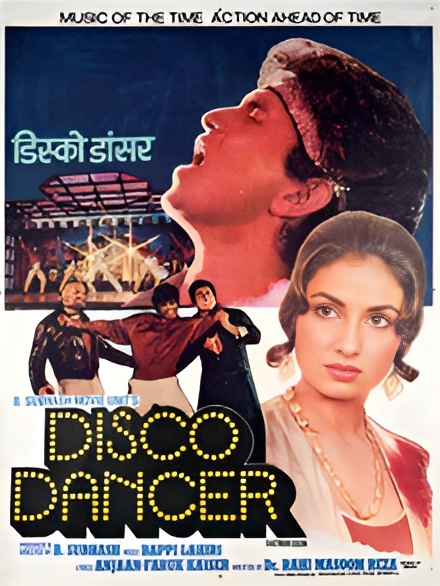
We had a major mishap though, while shooting a song. This song was sung by Kishore Kumar (Subhash, had in the past, worked as an assistant director to Kishore Kumar, the director) and a big set was erected for it. Then Subhash had a brainwave. He wanted to shoot the song in a few long takes.
Now, a regular song has 100 shots of various things and consists of different angles. But this 3-minute song would be shot in just 5-6 shots. Here, the camera would be handheld and the cameraman would have to walk all around, shooting continuously as the actor danced.
We did a few rehearsals and decided to start shooting. The shooting progressed faster than usual. The idea was to wrap up the song in a single day’s shoot. Then at one point, the sound guy said there was a problem.
To understand the problem, you need to know that film cameras and playback song players do not run at the same exact speed. A cable is attached between the two instruments to synchronize them. The sound guy pointed out that the cable was not attached. Why was it not attached?
Since we were shooting with a hand-held, the camera had to be lighter, so the bulky motor (which is stable) was removed and the motor that was used was a ‘variable motor.’ That meant that it would work at a random speed. The discovery of the problem was devastating.
The only recourse was to reshoot the entire thing but that would be too costly. It was decided that we would keep what had been shot and try and salvage it on the editing table. Great effort was put in making the song look presentable.
If you now look closely at the song “Ae Oh Aah…” in the film, you will notice the movement is a bit jittery and out of sync. Not surprisingly, this song turned out to be the least popular song from “Disco Dancer.” But, in the end, nothing succeeds like success.
The sound effects (Foley) had to be recorded. Sound recording studios were expensive, in terms of our budget. Our recordist suggested using a sound studio of the 60s in Filmistan Studio. Nobody used that studio anymore and it came cheap.
There was one problem though; it was not soundproof. Hence, we could only record late at night and if no night shooting was happening. Despite the odds, we managed to record over a couple of nights and soon reached the stage where the film had to be mixed.
This means the various soundtracks of the film had to be mixed into a single track. We booked the Sea Rock Sound Studio, which had G.S. Bhatia as the chief recordist. We landed up there with the edited film, dialogue, and effects tracks.
We did not create any background music tracks as Bhatia had an idea. He had music on cassettes and a spool tape. A reel would be played and then music would be selected by listening to various tracks. We were making music tracks right there in a music studio!
One of the best deals that Subhash made was for the ‘overseas’ territory. Overseas territory meant ‘rest of the world.’ There were distributors who would buy films for 40% of the main territory. This meant that if a producer sold a main territory (Bombay) for 10 lakh, then the price for overseas would be 4 lakh.
Subhash had a hunch that his film would be a success abroad and did not sell the film to regular buyers. Instead, he discovered a firm in Tardeo, Mumbai, called ‘Kishore Film Exchange’ (KFE), which took films for distribution on a commission basis.
This arrangement seemed good to Subhash and, in fact, was a genius move. Imagine the success in Russia and China, which would not have yielded anything to Subhash if he had sold the rights of the film.
“Disco Dancer” recovered about 10 lakh from overseas sales, minus the KFE commission:one and a half times more than a regular deal. This was without adding the revenue from Russia and China. The net revenue from overseas was more than the total revenue from India.
The one thing which Subhash wanted to stand out was the film’s story and accompanying emotions. While “Disco Dancer” looked like a music and dance film (and that’s how people remember it), what worked best for the film was its core emotions.
It was not a film about a street boy becoming a big star. It was about a mother and son who were poor. The boy grows up to hate the man who insulted his mother.
As an adult, he continues eating from his mother’s hand and when she accidentally dies trying to save him, he sinks into a deep depression.
The song ‘Yaad aa raha hai tera pyaar’ is, in fact, a ballad for his mother. He sings that song after his old guru tells him “that his mother loved his singing and if he stopped singing, that’s when his mother will die forever.”
This reprimand makes the star bounce back from his silence and he sings the song. This emotional track is what made the audience love the film and made them run back to the theaters again and again.
“Disco Dancer” was planned to tide over tough times, but Subhash sensed the opportunity and showed his acumen by making a great film. One week after its release, the Bengal distributor arrived in Bombay to persuade Subhash to convert the rights into a lump sum amount.
Typically, distributors had to share profits after recovering costs. He paid 16 lakh in one cheque. The entire cost of making the film was approximately 50 lakh. The film, as you know by now, was a resounding success.


